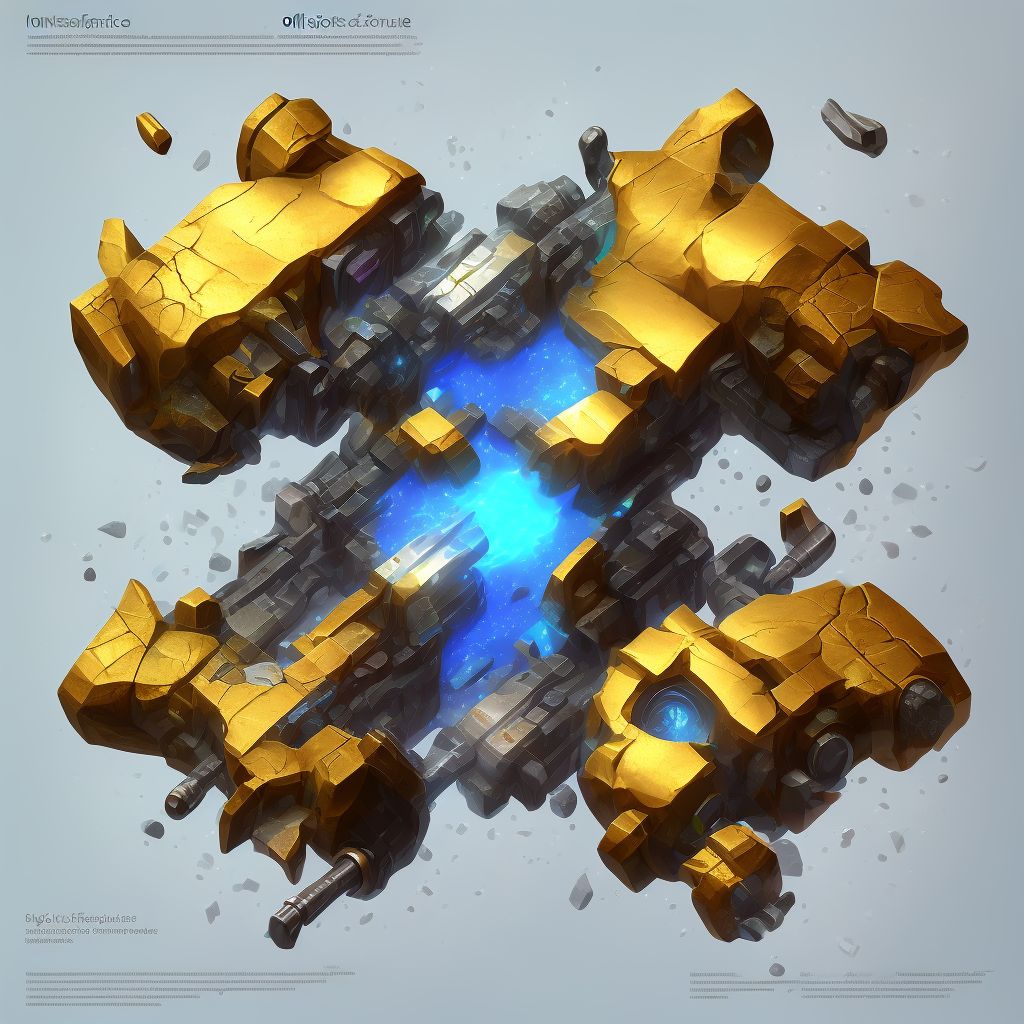
Nondisplaced oblique fracture of shaft of unspecified fibula, subsequent encounter for open fracture type I or II with nonunion Save
ICD-10 code: S82.436M
Disease category: S82.436: Nondisplaced oblique fracture of shaft of unspecified fibula
Nondisplaced Oblique Fracture of the Shaft of Unspecified Fibula: Understanding Subsequent Encounters for Open Fracture Type I or II with Nonunion
When it comes to orthopedic injuries, one condition that can occur is a nondisplaced oblique fracture of the shaft of the unspecified fibula. This type of fracture typically occurs due to a direct blow or trauma to the leg. In some cases, it may require subsequent encounters for open fracture type I or II with nonunion, which require medical attention and monitoring.
During subsequent encounters for open fracture type I or II with nonunion, healthcare professionals closely assess and manage the patient's condition. These encounters involve evaluating the progress of healing, assessing any complications, and determining the best course of action moving forward.
Nonunion refers to a condition where a fracture fails to heal properly. In the case of a nondisplaced oblique fracture of the fibula, nonunion can occur due to various factors such as inadequate immobilization, poor blood supply, or infection. Subsequent encounters focus on addressing these underlying issues to promote proper healing and prevent complications.
During subsequent encounters, healthcare professionals may perform a series of tests and examinations to assess the patient's condition. This can include X-rays, CT scans, or MRI scans, which help in evaluating the extent of the fracture and identifying any possible complications.
- The patient's medical history and previous treatment methods are reviewed to gain a comprehensive understanding of the case.
- Physical examinations are conducted to assess the range of motion, pain levels, and any signs of infection or inflammation.
- Imaging tests, such as X-rays or CT scans, are performed to visualize the fracture and identify any nonunion or other complications.
- Treatment options are discussed, considering factors such as the patient's age, overall health, and lifestyle.
The subsequent encounters for open fracture type I or II with nonunion aim to provide appropriate care and guidance for the patient's recovery. The treatment options may include surgical intervention, such as bone grafting or internal fixation, to promote bone healing and stability.
It is important to note that each case is unique, and treatment plans may vary. Therefore, it is crucial for individuals with this condition to consult with a qualified healthcare professional to receive the most suitable care tailored to their specific needs.
In conclusion, a nondisplaced oblique fracture of the shaft of an unspecified fibula can result in subsequent encounters for open fracture type I or II with nonunion. These encounters involve thorough evaluations, tests, and discussions to determine the best course of action for proper healing and recovery.
Treatment of Nondisplaced oblique fracture of shaft of unspecified fibula, subsequent encounter for open fracture type I or II with nonunion:
Treatment Options for Nondisplaced Oblique Fracture of Shaft of Unspecified Fibula, Subsequent Encounter for Open Fracture Type I or II with Nonunion
Dealing with a nondisplaced oblique fracture of the shaft of the unspecified fibula can be a challenging situation. However, with the right treatment options, patients can regain their mobility and heal effectively. In cases where the...
To see full information about treatment please Sign up or Log in